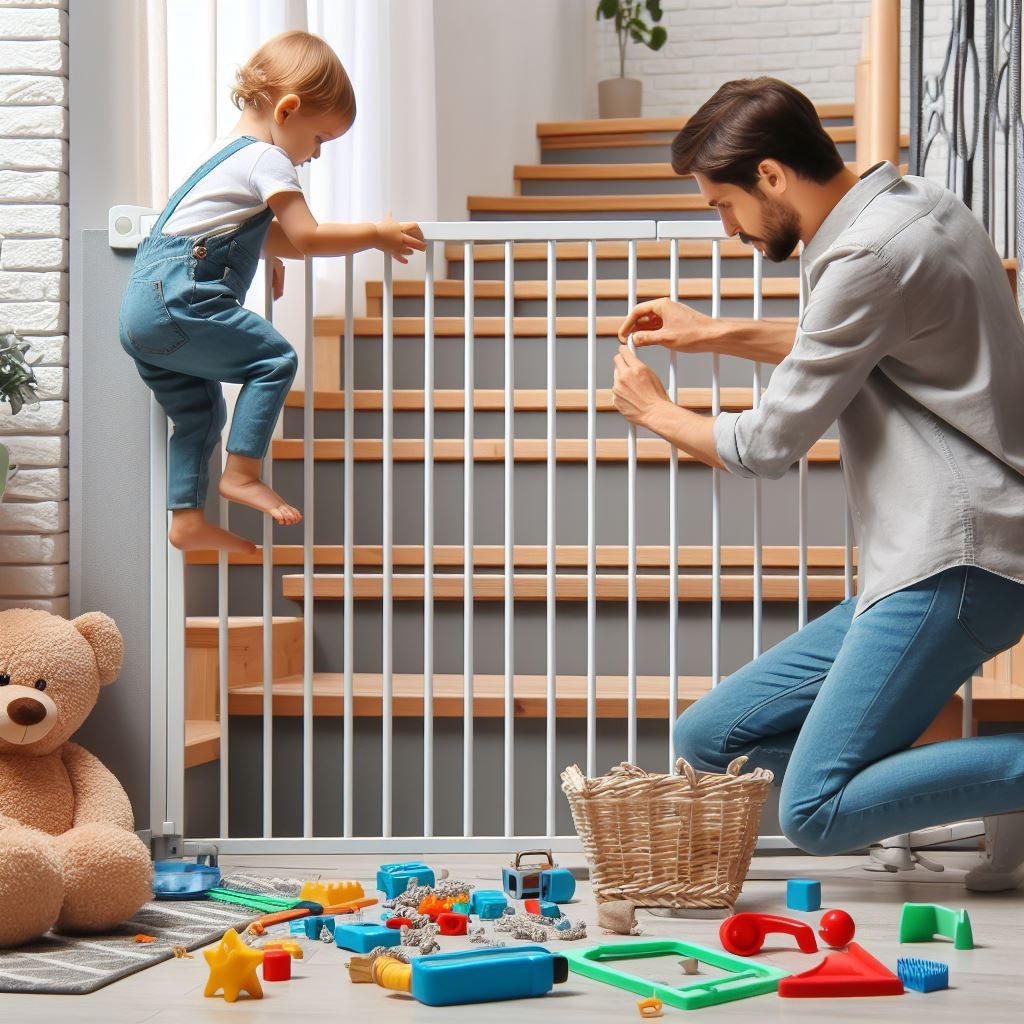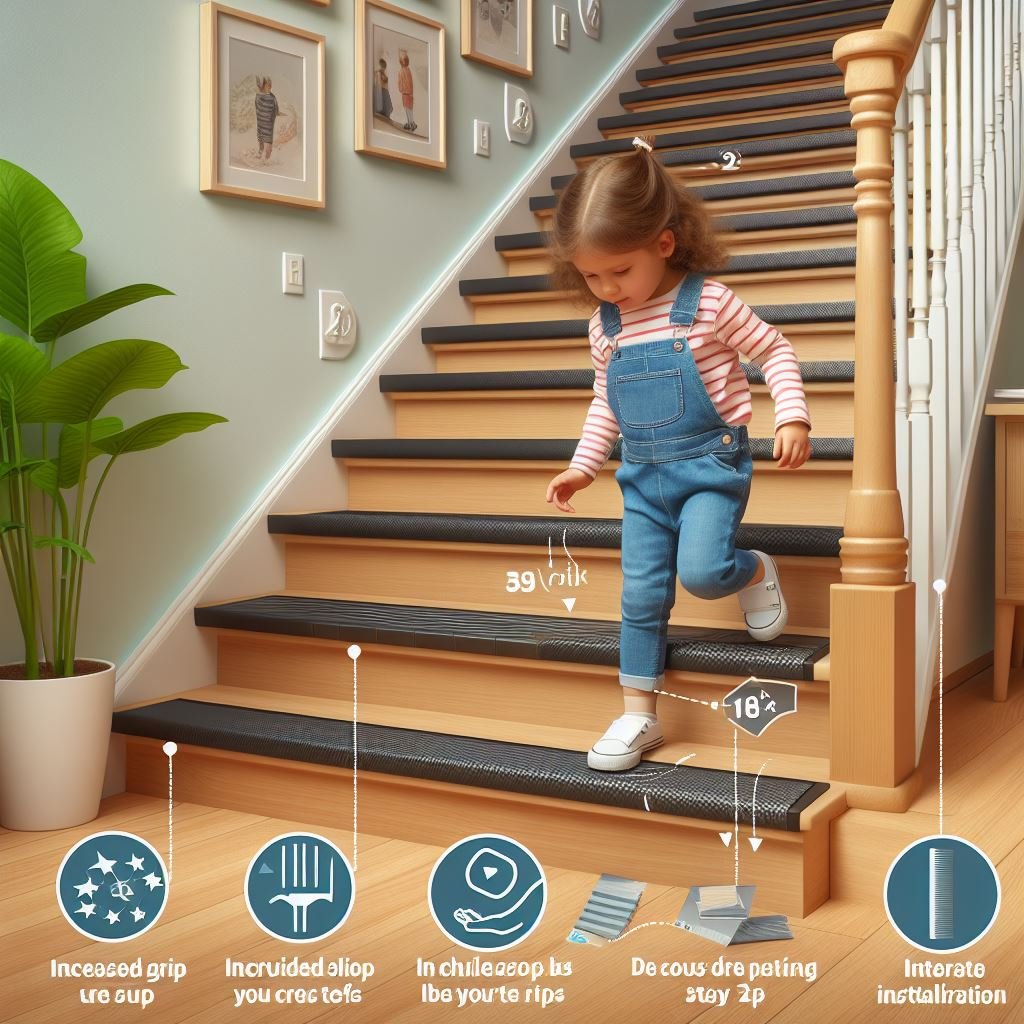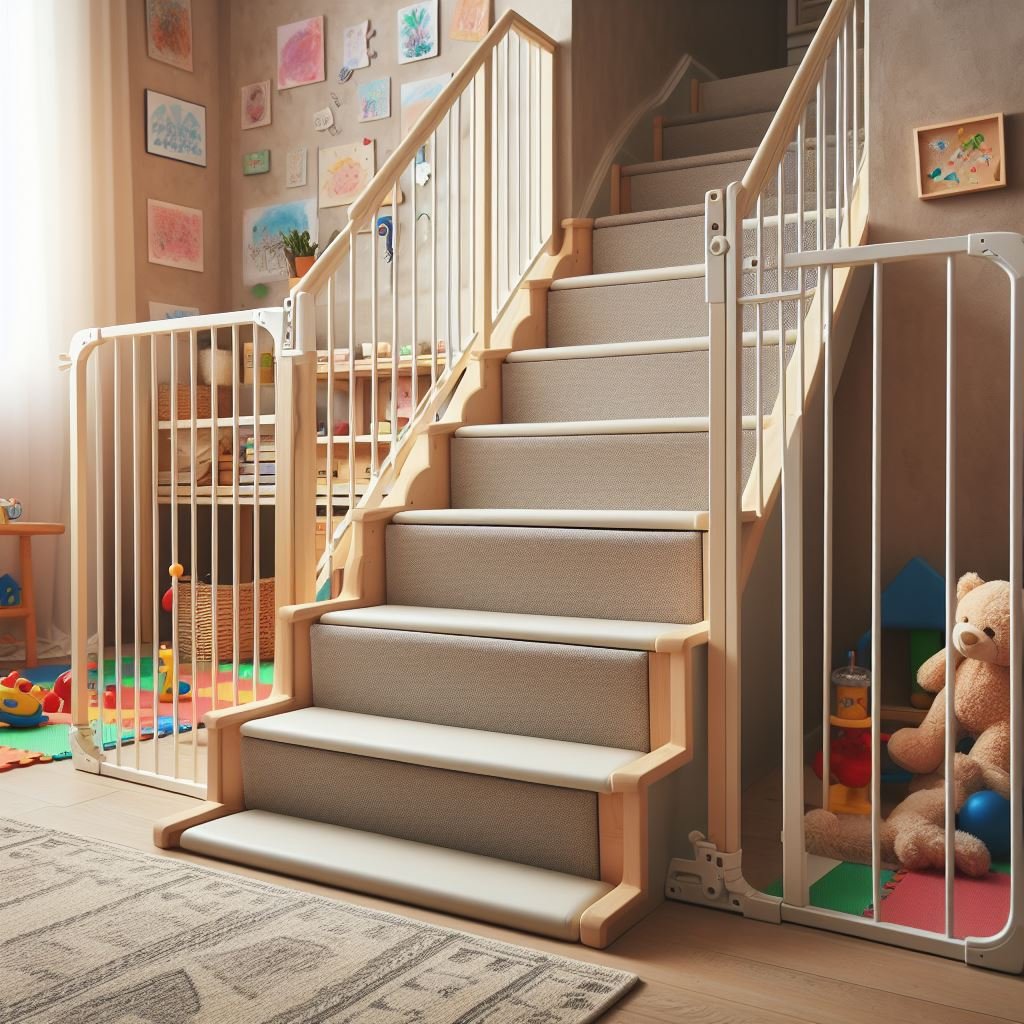How Do You Childproof Stairs ?
Concerned about the safety of your child on the stairs? You may be thinking, ‘How do I effectively childproof them?’
This article aims to provide you with the necessary guidance to ensure a secure environment for your little one.
By assessing risks, installing safety gates, securing railings and banisters, adding non-slip treads, and supervising your child, you can create a protective setting that fosters their exploration while maintaining peace of mind.
Let us equip you to serve and safeguard your precious child.
Key Takeaways
- Assess the height and steepness of stairs to evaluate risks
- Choose the appropriate safety gate based on the child’s age and mobility
- Regularly inspect and secure railings and banisters for signs of wear and tear
- Install non-slip treads to provide increased traction and prevent slipping
Assessing the Risks
Before implementing childproofing measures for stairs, it is crucial to carefully assess the potential risks involved. Ensuring the safety of children is of utmost importance, and understanding the potential dangers associated with stairs is the first step towards effective childproofing.
Stairs pose a significant risk to young children, as they can easily lose their balance, trip, and fall. The height and steepness of the stairs, as well as the presence of railings and the condition of the steps, are all factors that need to be evaluated.
One important aspect to consider is the height of the stairs. Higher stairs pose a greater risk, as falling from a higher distance can lead to more severe injuries. Additionally, the steepness of the stairs can affect a child’s ability to navigate them safely. Steeper stairs may be more challenging for young children to climb or descend, increasing the likelihood of accidents.
Another critical factor is the presence and condition of railings. Sturdy and properly installed railings can provide support and prevent falls. It is essential to ensure that railings are securely attached and that the gaps between the rails are narrow enough to prevent a child from slipping through.
Lastly, the condition of the steps should be assessed. Broken or uneven steps can pose a tripping hazard. It is crucial to repair any damaged steps to minimize the risk of accidents.
Childproof Stairs : Installing Safety Gates
Installing safety gates is an effective way to prevent young children from accessing stairs and ensure their safety. Safety gates act as barriers, creating a physical boundary that prevents children from venturing onto the stairs unsupervised. These gates are designed to be sturdy, reliable, and easy to install in order to provide parents and caregivers with peace of mind.
When choosing a safety gate, it is important to consider the age and mobility of the child. For younger children who are not yet walking or crawling, a pressure-mounted gate can be sufficient. These gates are easy to install and remove, making them ideal for temporary use or in areas where drilling into walls is not possible.
On the other hand, for older children who are more active and curious, a hardware-mounted gate is recommended. These gates are securely attached to the wall or banister using screws, ensuring that they cannot be easily dislodged or pushed over.
It is important to ensure that the gate is properly installed and meets safety standards. Reading and following the manufacturer’s instructions is crucial to avoid any mistakes that could compromise the gate’s effectiveness. Regularly inspecting the gate for any signs of wear and tear, such as loose screws or broken parts, is also essential to maintaining its functionality.

Securing Railings and Banisters
To ensure maximum safety for children, it is important to properly secure railings and banisters in order to prevent accidents on the stairs. Railings and banisters are crucial components of stair safety as they provide support and stability while ascending and descending. However, they can also pose a potential hazard if not secured properly.
One way to secure railings and banisters is by checking for any loose parts or wobbling. Tightening screws or bolts can help ensure stability and prevent accidents caused by a railing or banister giving way under pressure. Additionally, inspecting the railings and banisters regularly for signs of wear and tear, such as cracks or splintering, is essential. Any damaged parts should be repaired or replaced promptly to maintain their structural integrity.
Furthermore, installing safety netting or mesh along the banisters can add an extra layer of protection for childproof stairs, especially for smaller children who may be prone to squeezing through gaps. This precautionary measure (installing childproof stairs) can prevent children from accidentally slipping or falling through the openings between the railings.
It is also important to consider the height of the railings and banisters. Industry standards recommend a minimum height of 36 inches for railings and banisters to ensure the safety of children. If the existing railings or banisters do not meet this requirement, installing additional barriers or raising the height may be necessary.
Adding Non-Slip Treads
Non-slip treads provide an effective solution for enhancing traction on childproof stairs and reducing the risk of slips and falls. These simple yet essential additions can make a significant difference in ensuring the safety of your children and loved ones.
Here are three reasons why adding non-slip treads to your childproof stairs is a great idea:
- Increased Grip: Non-slip treads are designed with textured surfaces that offer enhanced grip and traction, even in wet or slippery conditions. This feature ensures that your children can confidently navigate the stairs without the fear of slipping or losing their balance.
- Easy Installation: Adding non-slip treads to your stairs is a quick and straightforward process. Most treads come with adhesive backing, making installation a breeze. Simply measure and cut the treads to fit your stairs, peel off the backing, and press them firmly onto the steps. Within minutes, your stairs will be transformed into a safer environment for your little ones.
- Versatility: Non-slip treads come in a variety of materials, colors, and styles, allowing you to choose the ones that best complement your home decor. Whether you prefer clear treads that blend seamlessly with your stairs or vibrant treads that add a pop of color, there’s an option to suit every taste.

Supervising and Educating Your Child
Supervising, along with providing proper education, is crucial to ensuring the safety of your child when they are using the stairs. As a parent or caregiver, it is your responsibility to be vigilant and aware of your child’s actions when they are near the stairs. This includes actively supervising them while they navigate the stairs and teaching them the necessary skills to use the stairs safely.
First and foremost, it is important to always keep an eye on your child when they are near the stairs. Children are naturally curious and may try to climb or explore the stairs without realizing the potential dangers. By being present and attentive, you can quickly intervene if any unsafe behavior occurs.
Additionally, educating your child about stair safety is essential. Teach them to always hold onto the handrail while using the stairs, and encourage them to take one step at a time. Explain the potential risks of running, jumping, or playing on the stairs, and emphasize the importance of using the stairs for their intended purpose: ascending or descending between different levels of the house.
Furthermore, reinforce the importance of never leaving toys, clothes, or any other objects on the stairs. These items can create tripping hazards and increase the risk of accidents. By instilling these safety habits early on, you are equipping your child with the knowledge and skills needed to navigate stairs safely.
Frequently Asked Questions
What Are Some Common Types of Safety Gates Available for Stairs?
Some common types of safety gates available for stairs include pressure-mounted gates, hardware-mounted gates, and retractable gates. These gates are designed to prevent children from accessing staircases and ensure their safety.
How Often Should Non-Slip Treads Be Replaced?
Non-slip treads on stairs should be replaced periodically to maintain their effectiveness and ensure safety. Regular inspection, considering factors such as wear and tear, usage frequency, and environmental conditions, will help determine the appropriate replacement schedule.
Are There Any Specific Regulations or Guidelines for Securing Railings and Banisters?
There are specific regulations and guidelines in place for securing railings and banisters. These are designed to ensure the safety of individuals, particularly children, and to prevent accidents and falls on staircases.
Can I Use a Baby Gate at the Top of the Stairs Instead of Installing One at the Bottom?
Yes, it is possible to use a baby gate at the top of the stairs instead of installing one at the bottom. However, it is recommended to install gates at both the top and bottom for maximum safety and prevention of accidents.
What Are Some Effective Ways to Educate My Child About Stair Safety?
To effectively educate your child about childproof stair safety, it is important to emphasize the potential dangers and consequences of not following safety guidelines. Teach them how to properly navigate stairs, hold onto railings, and always supervise them when they are near stairs.
Conclusion
In conclusion, childproofing stairs is crucial to ensuring the safety of your child. By assessing the risks, installing childproof safety gates, securing railings and banisters, and adding non-slip treads, you can create a secure environment for them to navigate the stairs.
Taking these precautions will provide peace of mind and prevent accidents, allowing your child to explore their surroundings confidently and safely.

